What if we told you that many of today’s giant-dog breeds owe their size to an evolutionary shortcut for strength rather than random fluffiness or show-ring aesthetics? Research from the Dog Aging Project reveals that large dogs grow differently and face unique health risks, hinting that their size is closely tied to their original purpose.
These towering companions weren’t bred simply to impress. For centuries, many of the largest breeds were designed to guard livestock, protect estates, and deter predators with their sheer presence. Their massive frames made them more valuable than any ornament — they were living security systems for farms, caravans, and even royal lands.
That’s why their size didn’t happen by accident. These big dogs were crafted for big jobs, from defending fortresses to pulling loads across snow and shielding herds from wolves.
In this blog, we’ll uncover how these giants earned their place in history, revealing stories far deeper than being “tall and fluffy.”
Join me as we explore the powerful — and surprisingly tender — origins of these remarkable canine giants.
Giant Dog Breeds with Surprising Histories
1. Tibetan Mastiff
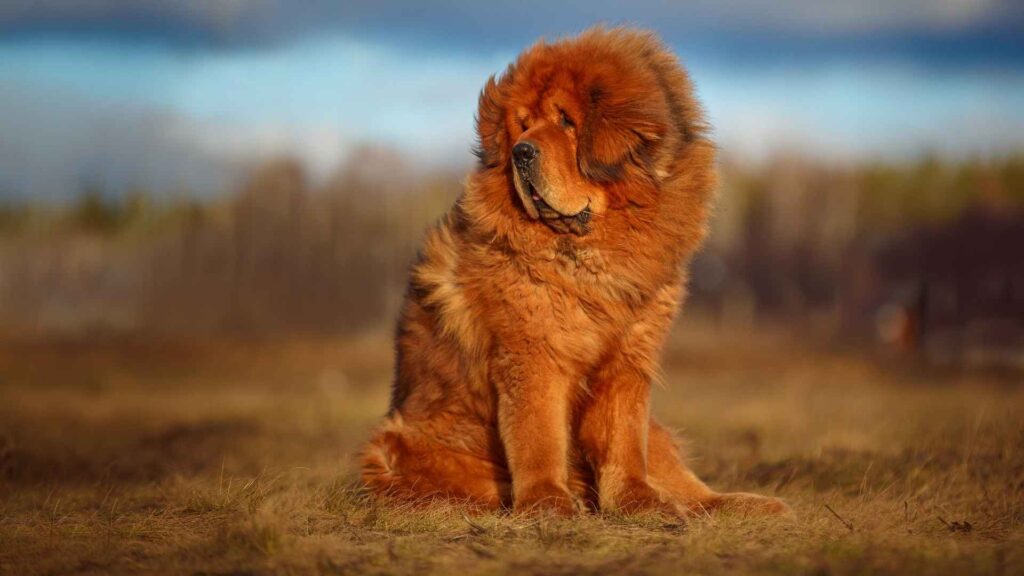
For centuries, the Tibetan Mastiff has been wrapped in myth, guarding Himalayan monasteries where travelers swore its silhouette looked more lion than dog.
Ancient accounts described these giants as night guardians that moved like shadows in the snow and vanished by dawn. Their presence alone was said to keep thieves, predators, and even invading forces at bay.
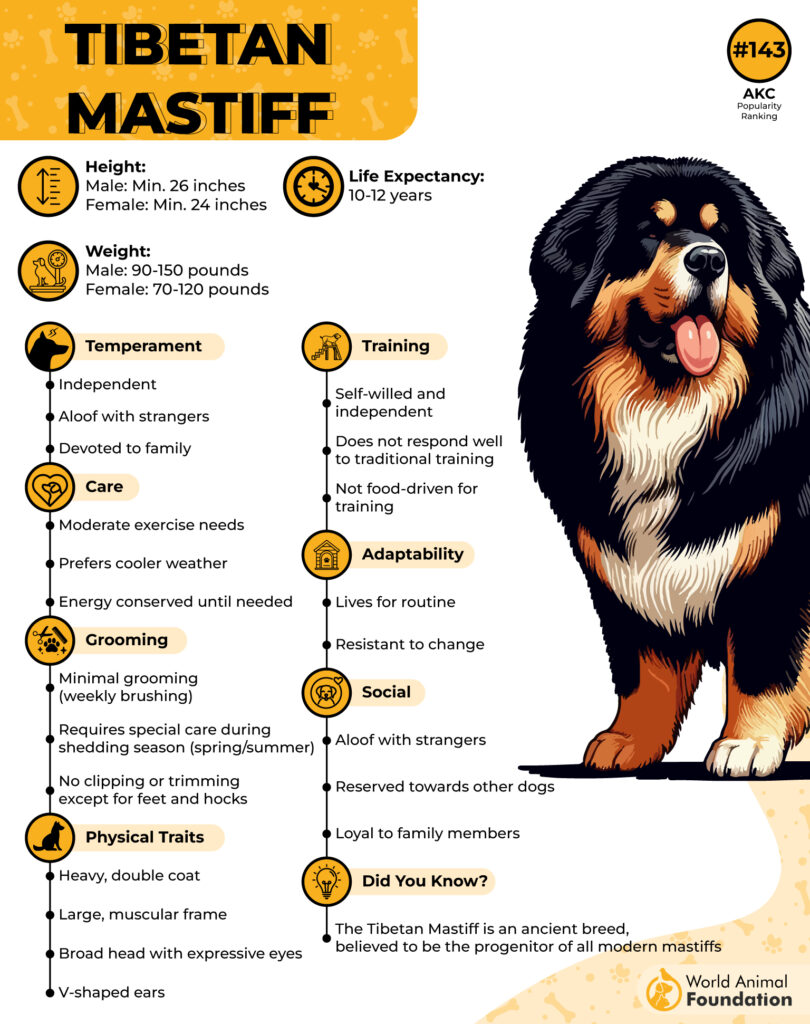
Few people realize the Tibetan Mastiff’s original mission was more strategic than ferocious. These giants acted as perimeter protectors, patrolling sprawling mountain lands while monks and herders slept. Their role was built on endurance, territorial awareness, and the uncanny ability to sense danger long before humans did.
Anatomy of a Giant: What Their Build Reveals
• Thick double coat suited to the Himalayan cold
• Heavy bone density for stable footing on rocky terrain
• Broad skull enhances jaw power and sensory awareness
• Long stride that allows wide-range patrolling across mountain passes
Temperament Time-Capsule: Behavior Rooted in History
• Strong independence forged through centuries of solo night guarding
• Deep loyalty toward familiar humans
• Reserved nature around strangers, echoing old-world territorial instinct
• Nighttime alertness carried from its ancient role
Today, the Tibetan Mastiff has transitioned into a confident family protector that thrives in spacious environments. These dogs excel as watchful companions for rural homes and large properties, maintaining their quiet, observant presence. Their instinctive calm makes them less reactive and more strategic in how they protect.
American Kennel Club (AKC) adds that the origins of the Tibetan Mastiff trace back to nomadic tribes of Tibet, Nepal, and Bhutan, where they were prized for safeguarding caravans across treacherous mountain routes.
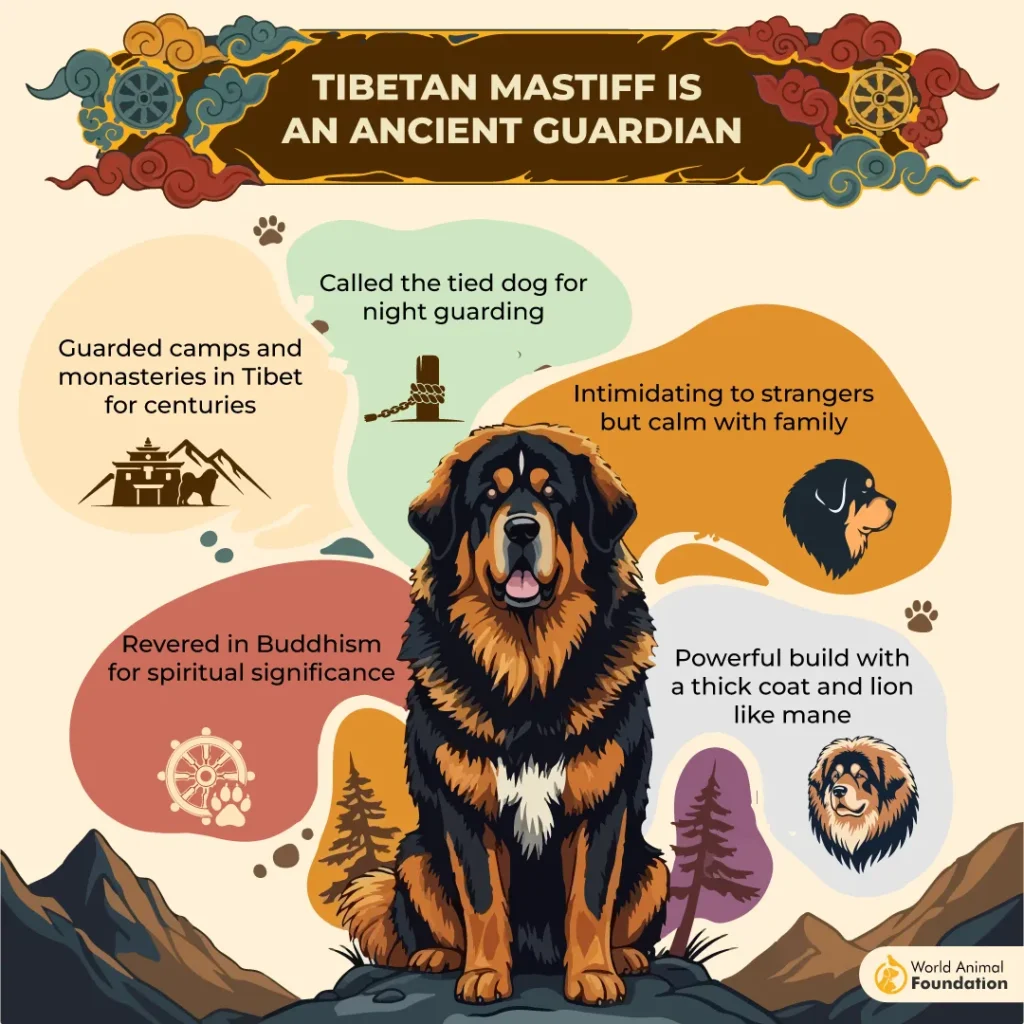
Early explorers like Marco Polo wrote about their extraordinary size and courage. Their lineage remains one of the oldest in dog history, shaped by isolation, altitude, and centuries of selective breeding.
2. Irish Wolfhound

The Irish Wolfhound carries a past filled with legendary battles and poetic reverence, appearing in ancient Celtic tales as a symbol of courage and nobility.
Warriors described these towering hounds as companions capable of pulling enemy soldiers off horseback. Their unmatched height granted them a mythical status that few breeds ever reached.
Many readers assume their role was limited to wolf control, yet the Irish Wolfhound’s job extended far beyond that.

These dogs were estate defenders, war partners, and prestige symbols gifted between kings as the highest honor. Their true mission was to stand as the ultimate guardians of ancient Irish lands and families.
Anatomy of a Giant: What Their Build Reveals
• Exceptional height allowing sweeping visual range over open fields
• Long, powerful legs built for pursuit over vast terrain
• Coarse coat offering protection in rugged climates
• Deep chest supporting optimized oxygen flow for endurance
Temperament Time-Capsule: Behavior Rooted in History
• Calm nature that allowed them to remain steady during hunts
• Softness toward their families, valued by ancient clans
• Brave yet patient character derived from selective breeding
• Gentle approach contrasting with their formidable size
PetMD explains that in modern life, the Irish Wolfhound has become a serene companion with a noble presence, fitting perfectly into homes that appreciate calm giants.
Their affectionate spirit blends seamlessly with families seeking a large dog with a gentle soul. They still possess a guardian’s instinct, though expressed through quiet watchfulness rather than aggression.
Their origins date back to at least 7000 BC in Ireland, evolving through centuries of selective breeding for height, speed, and courage. This is one of the tallest dog breeds and was once reserved for nobility and protected by law due to their importance. Their legacy remains one of the most culturally significant among giant breeds.
3. Great Dane

The Great Dane’s story reads like a contradiction: a towering giant celebrated for both elegance and power.
Early European estates prized these gentle giants as noble hunting companions capable of facing wild boars. Historical artworks and court writings portray them as trusted guardians of royal chambers during the night.
The Great Dane was never meant to be merely a showy companion. Originally developed for boar hunting, their combination of speed and strength made them essential to the aristocracy.
These dogs also stood guard inside castles, offering both protection and a status symbol through their impressive stature.
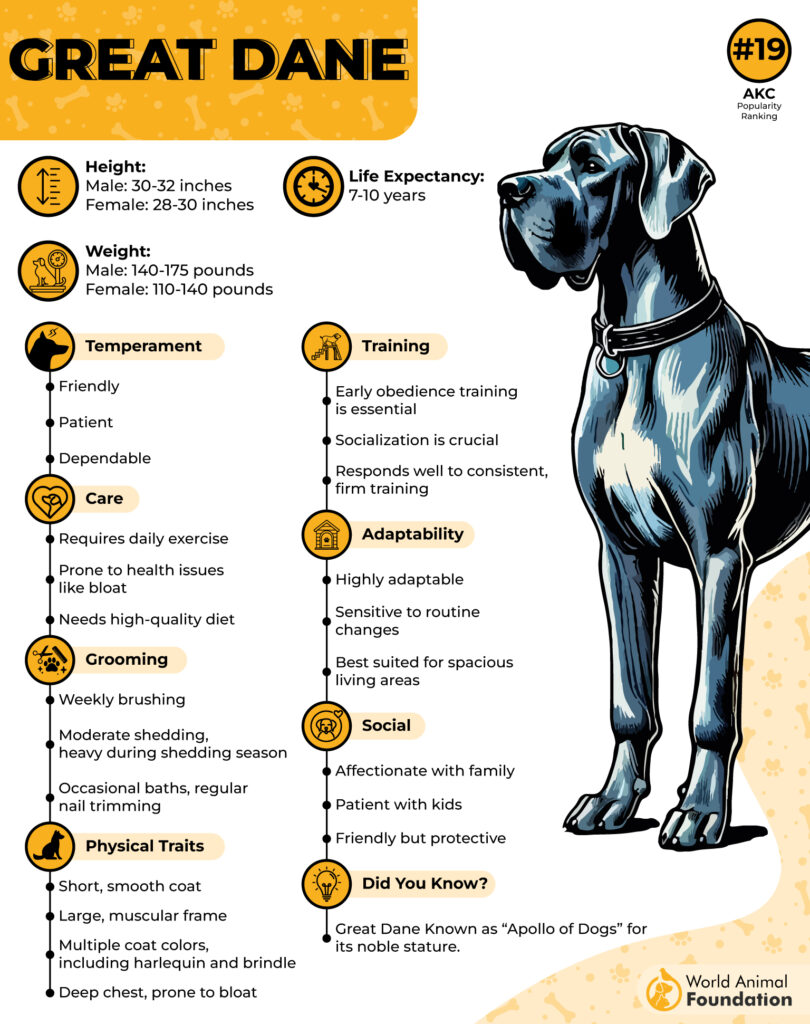
Anatomy of a Giant: What Their Build Reveals
• Long limbs that support swift acceleration
• Muscular frame suited for strength-based tasks
• Narrow waist improves agility in pursuit
• Tall posture reinforces visibility and deterrence
Temperament Time-Capsule: Behavior Rooted in History
• Friendly nature refined from centuries of noble companionship
• Protective instinct linked to castle guarding traditions
• Eagerness to bond closely with their household
• Confident approach to new challenges
In the modern world, the Great Dane continues to shine as a loyal, gentle guardian with a commanding silhouette. Their affectionate, gentle nature and patient personality make them adored family companions. They remain vigilant protectors of their homes, embracing a mellow yet reliable watchfulness.
Britannica notes that their origins trace back to Germany, where early breeders combined Mastiff and sighthound traits to create a dog capable of handling both hunts and royal protection duties.
Over time, the Great Dane evolved into an icon of elegance, balancing athleticism with kindness. Their history continues to influence their calm yet commanding nature.
4. Mastiff
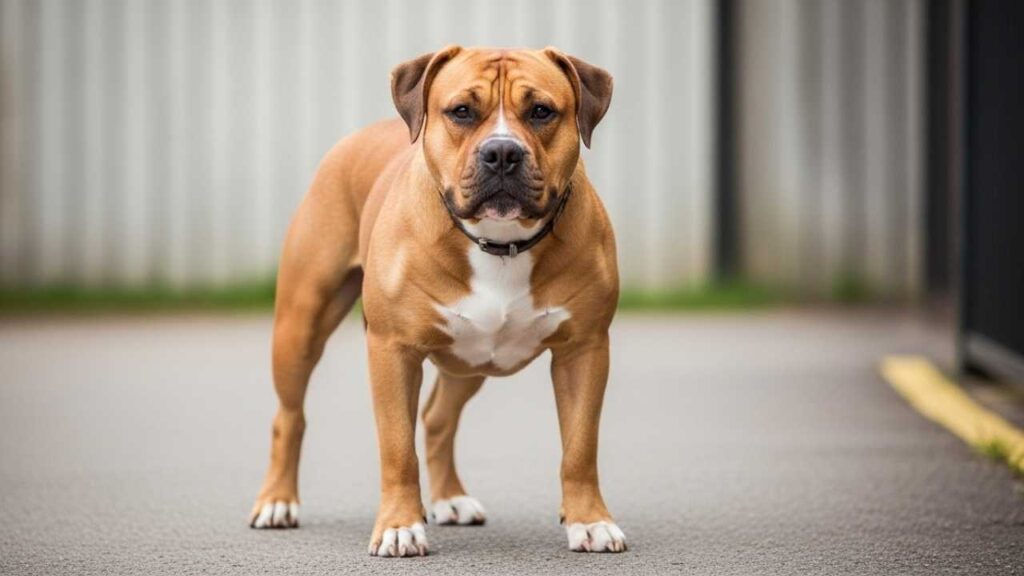
The Mastiff stands as a breed whose history echoes through ancient battlefields and medieval fortresses. Roman records describe these immense dogs fighting alongside soldiers, guarding encampments, and intimidating enemy forces. Their massive presence made them living legends long before modern breeding refined their appearance.
Although many associate Mastiffs with family companionship today, their original duty revolved around defense on the grandest scale.
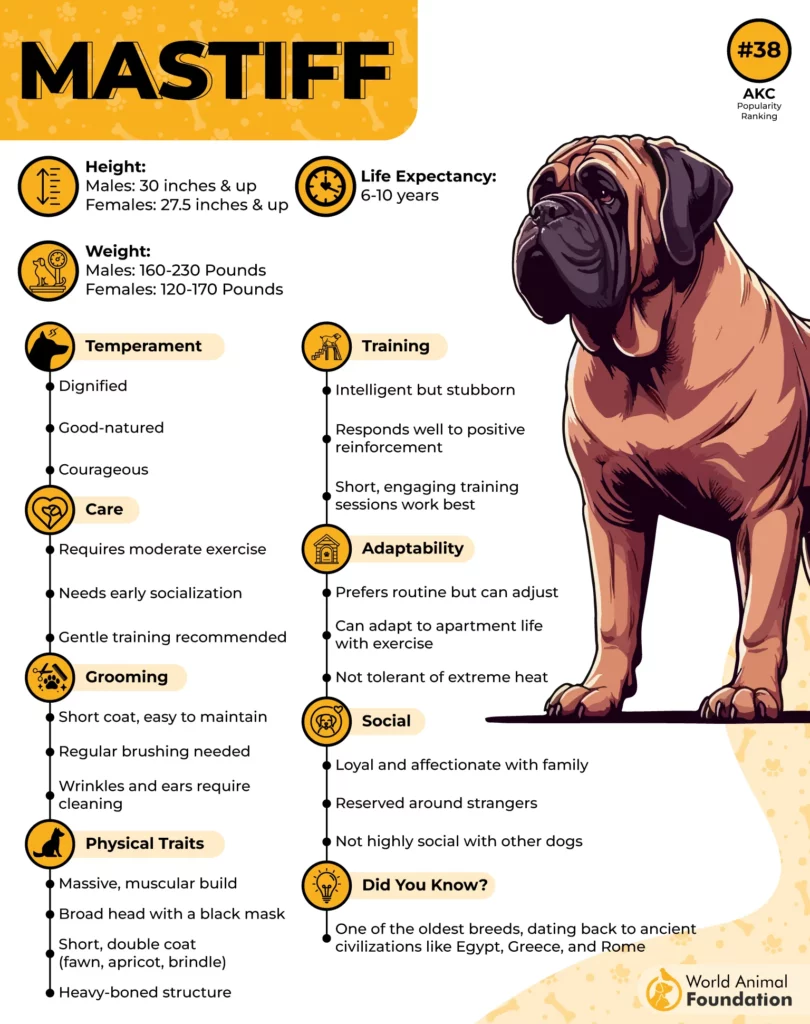
These guard dogs protected estates from intruders, stood guard at fortress gates, and were occasionally used in warfare for their imposing strength. Their purpose centered on deterrence, bravery, and stability in high-stakes environments.
Anatomy of a Giant: What Their Build Reveals
• Remarkably broad chest offering superior power
• Dense musculature is ideal for guarding tasks
• Heavy frame creating an immediate visual deterrent
• Strong jaws used historically in defensive work
Temperament Time-Capsule: Behavior Rooted in History
• Deep loyalty formed through centuries of protecting families
• Calm personality that enabled sound judgment during threats
• Low reactivity, allowing focused guarding
• Strong sense of territory and responsibility
In today’s homes, Mastiffs serve as gentle giants who prioritize emotional bonds over brute strength. Their protective instinct remains intact, yet expressed in quiet confidence around their families. They are known for forming deep, meaningful connections with their households.
The Mastiff’s roots extend back to ancient Britain, where they were treasured for their defensive abilities and unwavering courage.
Early texts from Julius Caesar to medieval writers testify to their importance in shaping canine history. Their origin story reflects centuries of partnership between humans and one of the world’s most powerful working breeds.
5. Anatolian Shepherd
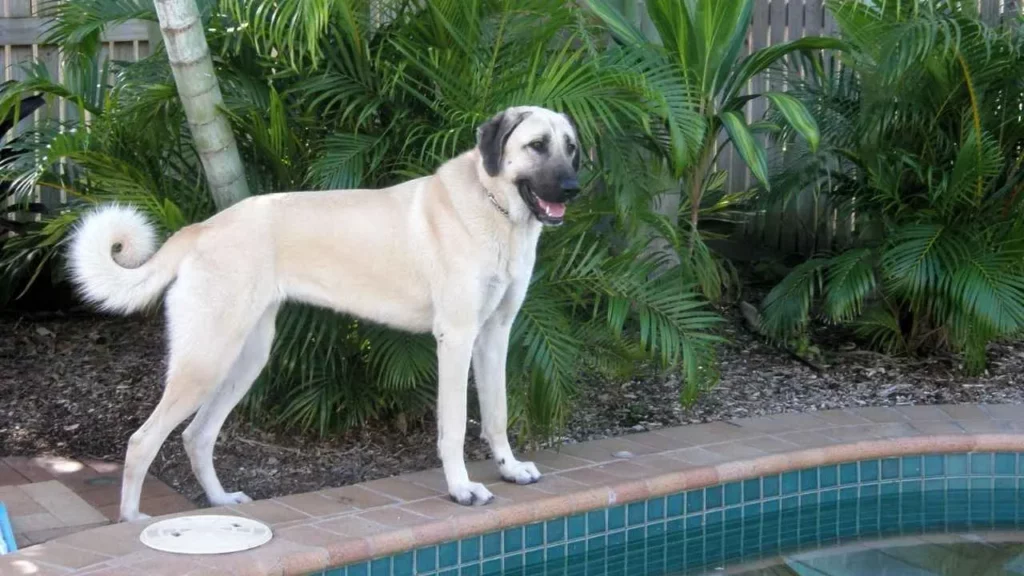
The Anatolian Shepherd’s story begins on the vast, open plains of Turkey, where legends describe them walking alongside caravans and guarding flocks from wolves and bears. Shepherds relied on them as silent protectors whose presence alone kept predators at a distance.
Their reputation grew so strong that some believed these dogs possessed an extraordinary intuition about approaching danger.
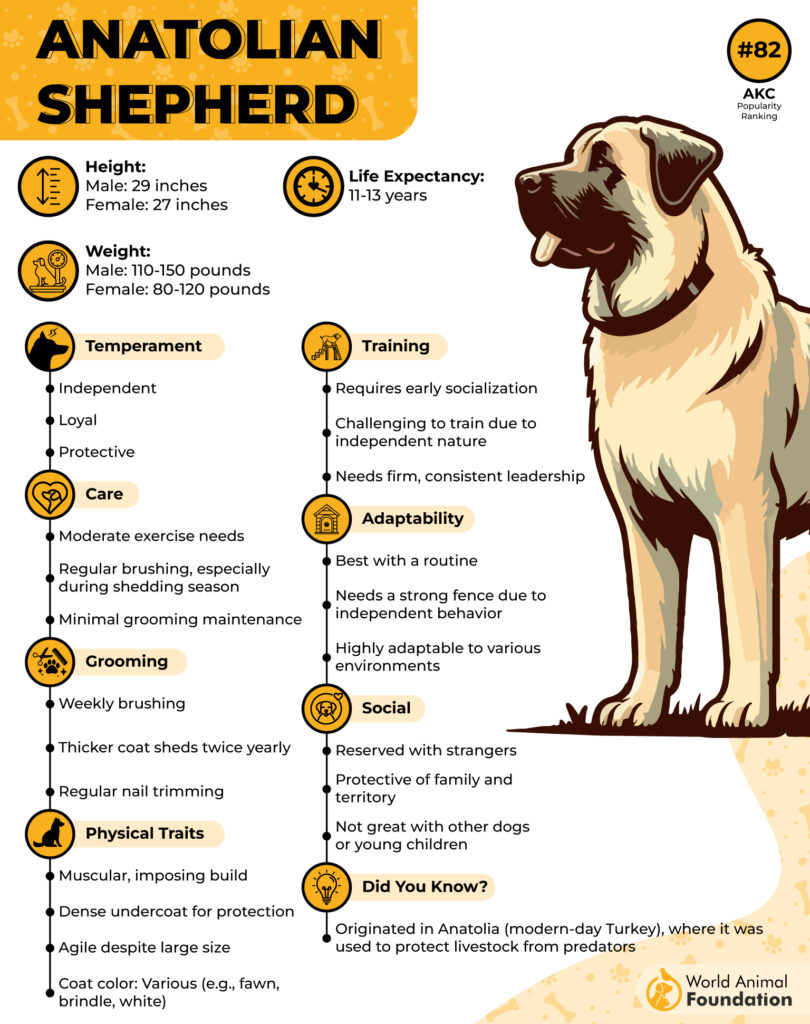
Most readers know this ancient breed guarded livestock, yet few understand how uniquely strategic their job was.
Anatolian Shepherds acted as independent decision-makers, patrolling large territories without constant human guidance. Their role demanded intelligence, endurance, and a deep understanding of herd behavior.
Anatomy of a Giant: What Their Build Reveals
• Weather-resistant coat suited for harsh Anatolian climates
• Long legs enabling efficient patrolling across hillsides
• Muscular build supporting strength against predators
• Upright, alert posture for scanning distant threats
Temperament Time-Capsule: Behavior Rooted in History
• Strong problem-solving abilities from autonomous work
• Calm approach to guarding that reduces unnecessary conflict
• Deep protective instinct toward their flock or family
• Confident demeanor shaped by working in open landscapes
Today, the Anatolian Shepherd continues to excel in rural environments where livestock protection remains essential.
They serve as dependable guardians for farms and ranches, often working with minimal supervision. Their intelligence and steadiness have also made them popular in conservation programs protecting endangered species from predators.
Their origins reach back thousands of years through Central Anatolia’s pastoral cultures. These dogs were shaped by nomadic herders who depended on them for survival. Their legacy reflects millennia of adaptation to environmental pressures and the demands of protecting valuable livestock.
6. Cane Corso

The Cane Corso carries a dramatic legacy rooted in ancient Italy, where they served as protectors of farms, estates, and even military camps.
Historical art and writings depict them standing beside Roman soldiers, acting as imposing guardians against intruders. Their strength and discipline made them highly respected working dogs throughout the centuries.

This breed’s original purpose extended beyond simple guarding. Cane Corsos drove livestock, protected property, and even assisted in boar hunting, where their agility and intelligence were vital. Their job required a balance of speed, strategy, and courage, making them indispensable to rural Italian life.
Anatomy of a Giant: What Their Build Reveals
• Powerful jaw structure characteristic of ancient working dogs
• Well-developed muscles supporting athletic movement
• Compact, strong frame optimized for both speed and force
• Wide skull promoting heightened awareness
Temperament Time-Capsule: Behavior Rooted in History
• Confident leadership instinct honed through farm work
• Strong sense of loyalty to household members
• Protective mindset grounded in centuries of guarding estates
• Intelligent, purposeful approach to tasks
In modern homes, the Cane Corso remains an excellent guardian with a firm yet steady temperament. They form deep bonds with their families and thrive with consistent guidance. Their impressive stamina allows them to participate in various activities, from protection sports to farm management.
The Cane Corso’s origin story emerges from ancient Roman molosser dogs, later shaped by Italian farmers who refined their versatility.
Through generations, they became known for their reliability and balanced temperament. Their heritage continues to influence their role as dependable, capable companions today.
7. Alaskan Malamute
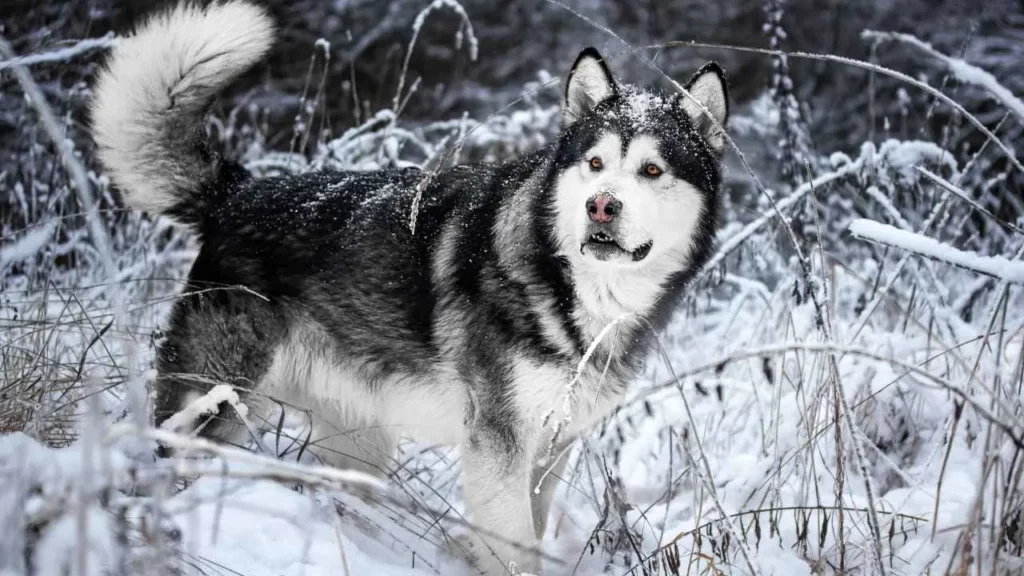
The Alaskan Malamute’s history begins with stories of Arctic endurance, where they pulled heavy sleds for the Mahlemut Inuit people.
These dogs helped transport goods across endless stretches of snow and ice, making survival possible in unforgiving climates. Their resilience earned them a legendary place in northern culture and exploration.

Many assume these Arctic giants were simply sled pullers, yet their work encompassed far more. Malamutes assisted hunters, protected campsites, and located seal breathing holes, helping communities secure food. Their versatility made them vital partners in the daily lives of Indigenous Arctic groups.
Anatomy of a Giant: What Their Build Reveals
• Dense double coat protecting against extreme cold
• Strong shoulders and chest are ideal for heavy pulling
• Broad paws acting like natural snowshoes
• Deep body structure supporting powerful endurance
Temperament Time-Capsule: Behavior Rooted in History
• Strong pack instincts formed through communal life
• High energy level tied to daily Arctic work
• Friendly, expressive nature valued by Inuit families
• Determined spirit inherited from survival-based tasks
Today, the Alaskan Malamute thrives as an adventurous companion suited for active homes. They enjoy hiking, pulling sports, and any task that lets them channel their energy and intelligence. Their affectionate, social personality makes them beloved family companions.
Their origins stem from the Mahlemut tribe of Alaska, whose survival depended heavily on these robust dogs.
Over generations, selective breeding emphasized power, cooperation, and adaptability to harsh weather. The Alaskan Malamute remains a living tribute to the deep partnership between humans and working Arctic dogs.
FAQs
How did giant dog breeds originally become so large?
Giant dog breeds developed their imposing size through selective breeding for specific jobs like guarding livestock, pulling heavy loads, or protecting large properties. Over generations, humans reinforced traits such as strength, endurance, thick fur, and commanding presence to create colossal canines capable of working in harsh environments.
How can I choose the right giant breed for my household?
Start by considering your living space, activity level, and ability to provide moderate exercise, socialization, and regular grooming. Giant breeds thrive in homes with a secure yard, consistent training, and owners ready to accommodate their impressive size and daily needs.
How do giant breeds behave around children and families?
Most giant breeds are known for their surprisingly gentle, incredibly loyal temperament, making them wonderful family members. With socialization and proper guidance, they tend to be calm, patient companions around children, often forming strong, protective bonds with the whole household.
Conclusion
These colossal canines prove that even the tallest dog or largest dog breed can be surprisingly gentle, carrying a rich history that still fascinates most humans. And while we covered many giants here, breeds like the Scottish Deerhound and other mastiff-type dogs also deserve attention.
Big dogs with thick fur, incredibly loyal hearts, and a friendly disposition continue to show how well dogs thrive with consistent training and moderate exercise.
A secure yard, regular grooming to prevent matting, and simple socialization keep these majestic creatures happy.


